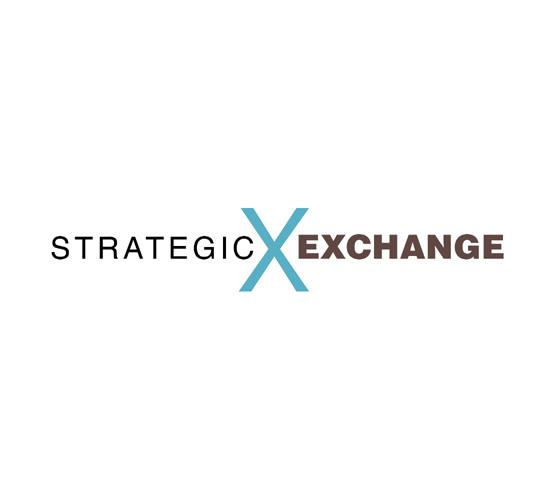Strategic Exchange: Now is a good time to proactively retool your messages - November 2022
By Kemp Harr
How you react to the uncertainty of the economy in the coming year will have a bearing on how you are impacted. Putting decisions on hold and just riding the wave might not be the best course of action.
Two primary markets that we already see stalling are automotive and housing, because these purchases are financed, and higher interest rates are forcing consumers to wait out major transactions, like upgrading a car or selling a home. Seasoned veterans in this industry know that real estate transactions are a major trigger for flooring sales, so we’re losing that catalyst for a while.
On the flip side, that means consumers are going to stay put, and with so much volatility in the equity markets, investments in real estate might be the wisest option as a place for consumers to park their cash. So, the positioning to your consumer is, Hey, you’re going to be in this home for the foreseeable future, so why not fix it up with better-end goods, which will make it more comfortable now and make the home worth more when you do sell it down the road?
Let me arm you with some interesting information. First, economies cycle, and there will eventually be a recovery once inflation has been put in check and interest rates start to come back down. Secondly, many consumers are sitting on a bundle of cash in their savings accounts. Some pundits estimate the number to be around $2.1 trillion in dry-powder cash that’s sitting on the sidelines, waiting for the right investment.
So, the action flooring retailers need to take now is training their RSAs on how to position and sell better-end goods. Granted, fewer consumers are walking in the door, so you also need to train them to network in your community and draw them in-especially the ones who have savings to spend.
It’s been said many times that RSAs think with their own wallet. In fact, in the market test that CCA Global recently conducted as part of its new Retail 2.0 program, it was revealed that consumers who shop alone (without the help of a salesperson) often end up buying higher-ticket items.
Another reason to focus on RSA training now is to proactively fill the void left by the loss of the Stainmaster brand. For years, DuPont and Invista representatives visited your store and filled your RSAs full of information that they then used to persuade your consumers to upgrade their carpet selection. Those days are over, and some of your sales force may still be grappling with a new pitch that plays well.
NEBRASKA FURNITURE MART’S ANSO GALLERY
When David Chambers at Nebraska Furniture Mart (NFM) converted his Stainmaster carpet area to an Anso Gallery in the chain’s Omaha store, he told me that his sales team had been hungry for a new story. He quenched their thirst with the Anso Gallery from Shaw and the Lasting Luxury NFA-branded carpet assortment. Both programs offer better-end goods and extended warranties.
When I toured NFM’s newly reset flooring department, I was happy to hear that there were 30% fewer SKUs in the same footprint, and I was also pleased to see the uniformity of the displays and samples. When you reduce clutter and make the selection process easier for the consumer, everybody wins.
I had wondered while traveling to this event why NFM was going so long with Shaw as a partner in its carpet area reset. Closer examination revealed how much effort Shaw had devoted to make it visually attractive with lifestyle photos and easy to shop with uniform displays. In fact, the floor used in the picture of the room with the dog matched the large carpet sample on the endcap next to it. But a second, and just as important, reason for the partnership with Shaw on the Anso Gallery centerpiece is that they are both owned by Berkshire Hathaway. In fact, in NFM CEO Tony Boldt’s opening remarks, he called NFM and Shaw “Hathaway siblings.”
MARAZZI FACTORY TOUR IN SASSUOLO
I jumped at the chance to get a plant tour of Marazzi’s largest factory in Sassuolo, which was also the brand’s headquarters during its long era of family ownership, prior to the acquisition by Mohawk. Not only was I looking to compare and contrast this European factory to the many I’ve toured here in the States, but this was also my only opportunity to see Marazzi’s new products, since it had opted to not exhibit at Cersaie this year. That’s a pretty big news story-when the world’s largest producer of tile decides not to exhibit at the largest tile show in the world. A third reason I accepted the invitation was to catch up with my friend Hector Narvaez, who knows more about the history of tile than anybody else I know.
The plant tour didn’t disappoint, but it also wasn’t much different from the plants I’ve toured in the U.S. Most of the equipment was made by Sacmi. This particular plant had six press lines and four kilns, and the largest-format product was 24”x24”. All material handling from clay to packaged product was done by robot with the exception of quality-control inspection. One interesting fact I learned was that today’s print heads, which are used to create the realism we see, are 12-color. Compare that to a four-color office printer.
If you have any comments about this month’s column, you can email me at kemp@floorfocus.com.
Copyright 2022 Floor Focus
Related Topics:Shaw Industries Group, Inc., National Flooring Alliance (NFA), Marazzi USA, Nebraska Furniture Mart, CERSAIE , Mohawk Industries
